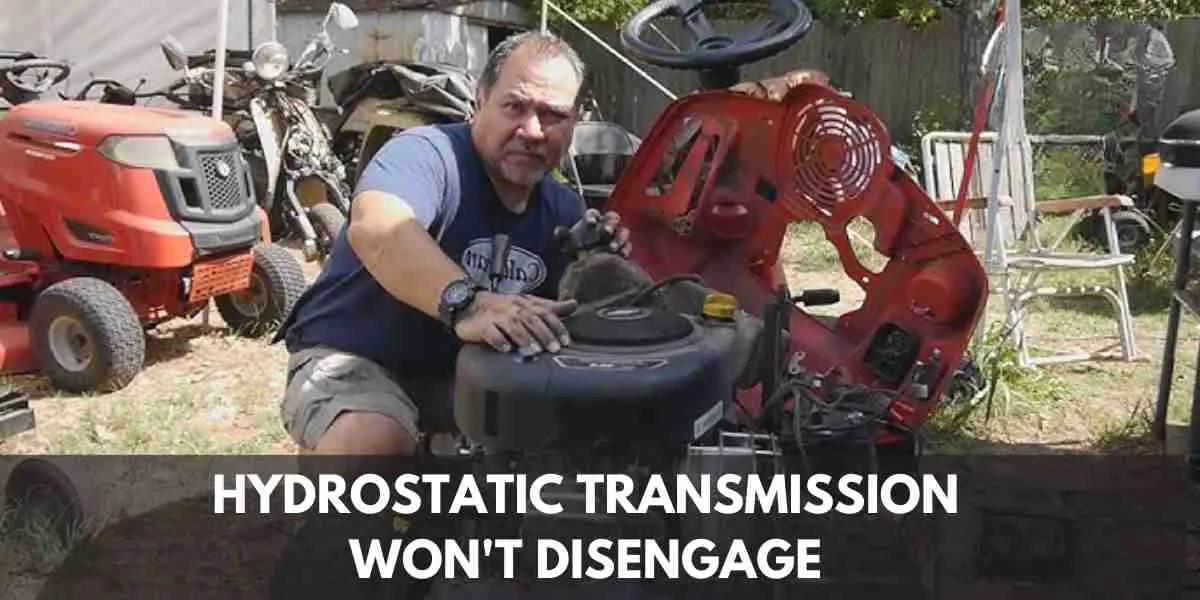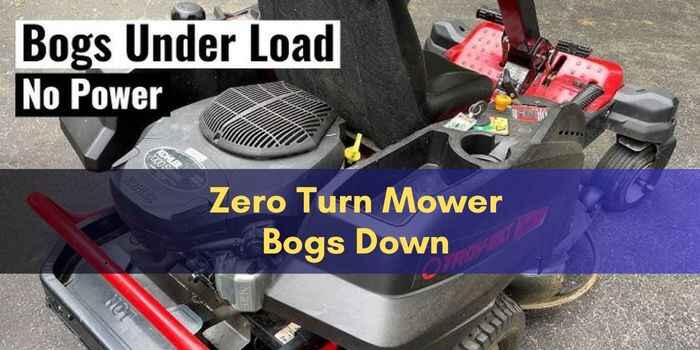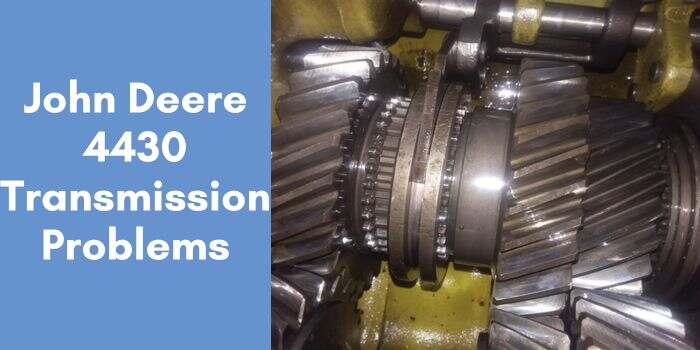Hydrostatic Transmission Won’t Disengage: Troubleshooting Solutions
To disengage a hydrostatic transmission, you can follow these steps: 1) Release the brake on your lawn tractor, 2) Push the transmission bypass rod forward to re-engage the transmission.
Understanding Hydrostatic Transmission Systems
When experiencing an issue with a hydrostatic transmission not disengaging, there are several steps you can take to troubleshoot the problem.
By following proper maintenance procedures and inspecting the hydraulic system, you can address any issues and ensure the longevity of your hydrostatic transmission.
Overview Of Hydrostatic Transmission Systems:
Hydrostatic transmission systems are a type of power transmission mechanism commonly found in various machinery and vehicles, including lawn tractors, construction equipment, and agricultural machinery.
Unlike traditional mechanical transmissions, which use gears and clutches to transfer power, hydrostatic transmissions rely on fluid pressure to transmit power from the engine to the wheels or other driven components.
How Hydrostatic Transmissions Work:
Hydrostatic transmissions work by utilizing a hydraulic pump and motor to convert mechanical power into hydraulic power.
Here’s how it works:
- The engine drives a hydraulic pump, which creates a flow of pressurized hydraulic fluid.
- This pressurized fluid is then directed to a hydraulic motor, which converts the hydraulic energy back into mechanical energy.
- The hydraulic motor is connected to the wheels or driven components, allowing it to transmit power and control the speed and direction of movement.
In simple terms, a hydrostatic transmission system consists of a pump, motor, and a series of hoses and valves that control the flow of hydraulic fluid.
By adjusting the flow and pressure of the fluid, operators can control the speed and direction of the machinery.
Components Of A Hydrostatic Transmission:
A hydrostatic transmission system is composed of several key components, each playing a crucial role in its operation.
These components include:
- Hydraulic Pump: The hydraulic pump is responsible for creating the pressurized hydraulic fluid by converting mechanical power from the engine.
- Hydraulic Motor: The hydraulic motor converts the hydraulic energy back into mechanical energy, allowing for the transmission of power.
- Control Valves: Control valves regulate the flow and pressure of the hydraulic fluid, enabling the operator to control the speed and direction of the machinery.
- Hoses: Hoses connect the pump, motor, and control valves, allowing for the flow of hydraulic fluid between these components.
- Hydraulic Fluid: The hydraulic fluid serves as the medium for transmitting power and lubricating the components within the system.
- Filters: Filters are used to remove contaminants from the hydraulic fluid, ensuring the smooth operation of the transmission and extending its lifespan.
By understanding the basics of hydrostatic transmission systems and their components, operators can troubleshoot issues and ensure proper maintenance, leading to optimal performance and longevity of the machinery.
Common Issues With Hydrostatic Transmission Disengagement
If your hydrostatic transmission won’t disengage, it could be due to common issues such as temperature control, pre-charging, or over-pressure protection.
It’s essential to perform correct maintenance and take prompt action when any trouble arises to ensure the longevity of your transmission.
Identifying Symptoms Of A Disengagement Issue:
- Loss of power: When a hydrostatic transmission fails to disengage, you may notice a loss of power, making it difficult for your vehicle or equipment to operate at its full potential.
- Unresponsive controls: Another symptom of a disengagement issue is unresponsive controls. When you try to disengage the hydrostatic transmission, the controls may not respond as expected.
- Stuck in gear: If your hydrostatic transmission won’t disengage, you may find that your vehicle or equipment remains stuck in gear, preventing you from changing speed or direction.
Reasons Why A Hydrostatic Transmission Won’T Disengage:
- Faulty control linkage: A common reason for a disengagement issue is a faulty control linkage. This can occur due to wear and tear, damage, or misalignment, preventing the linkage from properly disengaging the transmission.
- Low fluid levels: Insufficient fluid levels in the hydrostatic transmission can lead to disengagement problems. When the fluid is too low, it may not create enough pressure to disengage the transmission.
- Clogged filters: Over time, filters in the hydrostatic transmission can become clogged with dirt, debris, or contaminants. This can restrict the flow of fluid, resulting in a failure to disengage.
- Worn-out clutch or brake: A worn-out clutch or brake can also cause disengagement issues. If these components are worn or damaged, they may not be able to disengage the transmission effectively.
- Electrical malfunctions: Electrical malfunctions, such as a faulty solenoid or switch, can prevent the hydrostatic transmission from disengaging correctly. These issues should be inspected and repaired by a professional.
Remember, if you’re experiencing disengagement problems with your hydrostatic transmission, it’s essential to address the issue promptly to avoid further damage and ensure optimal performance.
Troubleshooting Solutions For Hydrostatic Transmission Disengagement
If you’re experiencing issues with your hydrostatic transmission not disengaging, there are troubleshooting solutions available.
From checking the oil level to inspecting hoses and connections, taking decisive action at the first sign of trouble can help resolve the problem.
Here are some steps you can take to identify and resolve the problem:
Checking For Proper Fluid Levels And Quality:
- Ensure that the fluid level in the hydrostatic transmission is at the recommended level.
- Check the quality of the fluid and look for any signs of contamination or degradation.
- If necessary, drain and refill the transmission fluid with the appropriate type and viscosity.
Inspecting And Adjusting The Control Linkage:
- Examine the control linkage connecting the hydrostatic transmission to the operator controls.
- Look for any signs of wear, misalignment, or damage.
- Adjust the linkage if necessary to ensure smooth operation and proper engagement and disengagement.
Assessing The Condition Of The Drive Belt:
- Inspect the drive belt for any signs of damage, wear, or misalignment.
- Check the tension of the belt and make any necessary adjustments.
- If the drive belt is worn or damaged, replace it with a new one.
Addressing Any Valve Blockage Or Restriction:
- Check for any blockage or restriction in the hydraulic valves of the hydrostatic transmission.
- Clean or replace any filters that may be causing a restriction.
- Ensure that the valves are functioning properly and that hydraulic fluid is flowing freely.
Examining The Pump And Motor For Malfunctions:
- Inspect the pump and motor of the hydrostatic transmission for any signs of malfunction, such as leaks, unusual noises, or decreased performance.
- Check the pressure and flow rate of the hydraulic fluid to ensure it is within the recommended range.
- If any issues are detected, repair or replace the pump or motor as necessary.
By following these troubleshooting solutions, you should be able to identify and resolve the issue with your hydrostatic transmission not disengaging.
How To Diagnose A Faulty Hydrostatic Transmission
If your hydrostatic transmission won’t disengage, there are steps you can take to diagnose the issue. Start by checking the hydraulic system, including the oil level and hoses for any damage or leaks.
Taking decisive action at the first sign of trouble is crucial for maintaining the longevity of your hydrostatic drive.
If you’re experiencing issues with your hydrostatic transmission, it’s important to diagnose the problem correctly before attempting any repairs.
Here are some steps to follow when trying to identify a faulty hydrostatic transmission:
Visual Check Of The Hydraulic System:
- Inspect the hoses and connectors for any signs of leaks or damage.
- Look for loose or disconnected parts, as well as any signs of wear and tear.
- Check if there is any buildup of debris or dirt that could be interfering with the system’s operation.
Checking For Leaks Or Damaged Hoses:
- Look for any visible signs of leaks, such as oil or fluid pooling under the machine.
- Inspect the hoses for any cracks, splits, or bulges.
- Check all connections and fittings for tightness and secure them if necessary.
Inspecting The Oil Level And Adding Oil If Necessary:
- Check the oil level in the transmission reservoir using the dipstick or sight glass.
- If the oil level is low, add the recommended type and amount of oil according to the manufacturer’s specifications.
- Make sure to use the correct type of oil for your specific hydrostatic transmission.
Performing A Purging Procedure:
- Some hydrostatic transmissions require a purging procedure to remove air from the system.
- Refer to the manufacturer’s instructions to perform the purging process correctly.
- This step is essential to ensure that the transmission functions properly and smoothly.
Conducting A Functionality Test:
- Once you have completed the visual inspection and addressed any leaks or low oil levels, it’s time to conduct a functionality test.
- Engage the transmission and observe if it disengages properly when the control lever or pedal is released.
- If the transmission fails to disengage or exhibits jerky movements, it may indicate a faulty hydrostatic transmission.
By following these steps, you can diagnose a faulty hydrostatic transmission and determine the necessary repairs or adjustments needed to fix the issue.
Remember, if you’re unsure or uncomfortable working on your hydrostatic transmission, it’s always best to consult a professional.
Professional Assistance For Hydrostatic Transmission Troubleshooting
For professional assistance with troubleshooting a hydrostatic transmission that won’t disengage, rely on expert technicians who can diagnose and fix common problems like temperature control, pre-charging, and over-pressure protection.
Prompt and decisive action is essential for ensuring the long life and smooth operation of your transmission.
When it comes to troubleshooting issues with your hydrostatic transmission, seeking professional assistance can be the best course of action.
While some minor problems can be resolved on your own, more complex issues may require the expertise of a trained technician or a reputable repair shop.
When To Seek Professional Help:
- If you have tried basic troubleshooting methods but the hydrostatic transmission still won’t disengage, it’s time to bring in the professionals. They have the knowledge and experience to diagnose and fix the problem efficiently.
- If you are not familiar with the inner workings of a hydrostatic transmission or lack the necessary tools and equipment, it is best to leave the troubleshooting to the professionals.
- It is also recommended to seek professional help if you are unsure about the specific problem or if there are multiple issues with your hydrostatic transmission.
Choosing The Right Technician Or Repair Shop:
- Take the time to research and find a technician or repair shop that specializes in hydrostatic transmissions. Look for reputable and certified professionals who have experience working with your specific make and model of equipment.
- Ask for recommendations from friends, family, or trusted industry professionals. Word-of-mouth referrals can often lead you to reliable and trustworthy technicians.
- Consider reading online reviews and testimonials to get a sense of the quality of service provided by different technicians and repair shops.
- Don’t hesitate to ask about the technician’s qualifications, certifications, and warranty options. A skilled and knowledgeable technician will be happy to provide you with this information.
Cost Considerations For Professional Repairs:
- When it comes to professional repairs for your hydrostatic transmission, cost can be a concern. However, it’s important to remember that investing in professional help is often the most cost-effective solution in the long run.
- The cost of professional repairs will depend on the extent of the problem and the specific repairs needed. Technicians may charge an hourly rate or a flat fee depending on their pricing structure.
- It’s a good idea to get multiple quotes from different technicians or repair shops to compare prices and ensure you are getting a fair deal.
- Additionally, consider the reputation and expertise of the technician or repair shop when making your decision. A higher cost may be worth it if it means getting high-quality repairs and reliable service.
Seeking professional assistance for hydrostatic transmission troubleshooting can save you time, effort, and potential further damage to your equipment.
By choosing the right technician or repair shop, you can ensure that your hydrostatic transmission is in good hands and will be back in proper working order in no time.
Preventive Maintenance Tips For Hydrostatic Transmissions
In order to prevent your hydrostatic transmission from not disengaging, it’s important to follow these helpful maintenance tips.
Keep an eye on the oil levels and regularly inspect the hoses and connections for any signs of leaks or damage.
Additionally, always address any issues at the first sign of trouble to ensure the longevity of your hydrostatic transmission.
Regular fluid checks and replacements:
- Regularly check the fluid level of your hydrostatic transmission and replace it as recommended by the manufacturer.
- Inspect for proper fluid color and consistency to ensure optimal performance.
- Always use the recommended fluid type for your specific hydrostatic transmission.
Lubrication of control linkage and other moving parts:
- Lubricate the control linkage and other moving parts of your hydrostatic transmission as specified in the manufacturer’s manual.
- Use high-quality lubricants to reduce friction and ensure smooth operation.
- Regularly inspect and clean the control linkage to prevent build-up and ensure proper function.
Cleaning and inspection of the drive belt:
- Regularly clean and inspect the drive belt of your hydrostatic transmission for signs of wear, cracks, or damage.
- Replace the drive belt if necessary to avoid potential issues and ensure optimal performance.
- Keep the drive belt free from debris and contaminants to maintain its integrity.
Proper storage and winterization techniques:
- When storing your equipment with a hydrostatic transmission for an extended period, follow proper storage procedures.
- Drain and replace the fluid before storing to prevent contamination and potential damage.
- Protect the transmission from moisture and extreme temperatures to avoid freezing or overheating.
Remember, following these preventive maintenance tips can help ensure the smooth operation and longevity of your hydrostatic transmission.
Regular checks, lubrication, cleaning, and proper storage techniques are key to avoiding costly repairs and maintaining optimal performance.
Frequently Asked Questions
How Do You Disengage A Hydrostatic Transmission?
To disengage a hydrostatic transmission, follow these steps:
1. Release the brake.
2. Push the transmission bypass rod forward to re-engage the transmission.
3. Check the oil level and add oil if needed.
4. Inspect hoses and connections for damage or leaks.
Ensure proper maintenance and troubleshooting if any issues persist.
What Is A Common Problem With Hydrostatic Transmission?
A common problem with hydrostatic transmission is that it won’t disengage, requiring troubleshooting and maintenance.
How Do You Diagnose A Bad Hydrostatic Transmission?
To diagnose a bad hydrostatic transmission, follow these steps:
1. Perform a visual check of the hydraulic system, inspecting for leaks or damage to hoses and connections.
2. Check the oil level in the transmission and add oil if necessary.
3.Test the transmission by engaging and disengaging it to see if it responds properly.
4. If the transmission still doesn’t work correctly, it may require further inspection or maintenance.
Remember to seek professional assistance for complex issues.
How Do You Disengage A Transmission On A Riding Lawn Mower?
To disengage a transmission on a riding lawn mower, follow these steps: 1. Release the brake.
2. Push the transmission bypass rod forward.
3. The transmission should be disengaged.
4. To re-engage, pull the bypass rod back.
Conclusion
Dealing with a hydrostatic transmission that won’t disengage can be frustrating. However, there are solutions available to help resolve this issue.
It is important to follow the recommended steps to properly disengage the transmission and avoid any potential damage.
By watching helpful tutorials and seeking expert advice, it is possible to troubleshoot the problem and find a solution.
Regular maintenance is also crucial in preventing such issues and ensuring the longevity of your hydrostatic transmission.
If all else fails, it may be necessary to seek professional assistance to diagnose and fix the problem.
Remember, taking prompt action and addressing any issues as soon as they arise will help keep your hydrostatic transmission running smoothly and efficiently.
Read More:



